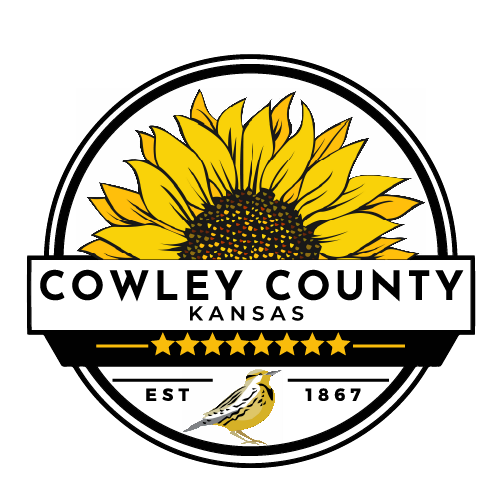Public Health Emergency Planning
Emergency Management
Federal Emergency Management
From the FEMA website:
DISASTER. It strikes anytime, anywhere. It takes many forms — a hurricane, an earthquake, a tornado, a flood, a fire or a hazardous spill, an act of nature or an act of terrorism. It builds over days or weeks, or hits suddenly, without warning. Every year, millions of Americans face disaster, and its terrifying consequences.
Cowley County Emergency Services
The mission of Cowley County Emergency Services is to serve the citizens of the County through effective planning for natural and man-made disasters. Our goal is to save lives and to protect property through coordination of an integrated emergency management system with all emergency response organizations, support services and volunteers. We will be an advocate for greater community efforts to mitigate and prepare for potential emergencies. We will support efforts to train and exercise emergency responders in both the public and private sectors. We will manage and coordinate efforts toward a rapid recovery from disasters with an effective disaster assistance program.
This agency is committed to effective actions to prevent some disasters and to reduce the impact of those over which we have no control.
Public Health Emergency Preparedness
The Public Health Emergency Preparedness (PHEP) cooperative agreement is a critical source of funding for state, local, and territorial public health departments. Since 2002, the PHEP cooperative agreement has provided assistance to public health departments across the nation. This helps health departments build and strengthen their abilities to effectively respond to a range of public health threats, including infectious diseases, natural disasters, and biological, chemical, nuclear, and radiological events. Preparedness activities funded by the PHEP cooperative agreement specifically targeted the development of emergency-ready public health departments that are flexible and adaptable.
Public Health Safety
Part of our commitment at the CCCHD is to not only promote healthy practices, but also to prevent injury and illness. Weather related illness is a big concern in Cowley County as we have dangerous high and low temperatures throughout the year. But there are steps you can take to prevent illness as a result of the extremes that come with living in Kansas.
Planning, Preparedness, & Recovery
Individual and Family Emergency Preparedness
What can you do to make your family better prepared for an emergency? Follow the three basic steps, “Make a Kit, Make a Plan and Stay Informed,” and you will be more ready for almost any disaster affecting your community. Visit the Kansas Department of Health and Environment for tips on Family and Individual Preparedness.
Home Prep Kit
Be prepared for an emergency by putting together a Home Prep Kit.
Bioterrorism and Public Health Emergency Preparedness
Download the All Hazards Preparedness Guide to learn more about how your family can be prepared in the event of a bioterrorist attack.
Volunteer
Community Emergency Response Team
The Community Emergency Response Team (CERT) concept was developed and implemented by the City of Los Angeles Fire Department (LAFD) in 1985. They recognized that citizens would very likely be on their own during the early stages of a catastrophic disaster. The LAFD decided that some basic training in disaster survival and rescue skills would improve the ability of citizens to survive until first responders or other assistance could arrive.
The training program that the LAFD initiated proved to be so beneficial that the Federal Emergency Management Agency (FEMA) felt that the concept and the program should be available to communities nationwide. In 1994, the Emergency Management Institute (EMI) expanded the CERT materials to make them applicable to all hazards.
Visit Cowley County Emergency Services for more information and to fill out an application.
Volunteer Registry
Become a Public Health Emergency volunteer with the State of Kansas Volunteer Registry.
Preparing for Disaster for People with Disabilities and other Special Needs
For the millions of Americans who have physical, medical, sensory or cognitive disabilities, emergencies such as fires, floods and acts of terrorism present a real challenge. The same challenge also applies to the elderly and other special needs populations. Protecting yourself and your family when disaster strikes requires planning ahead. The Red Cross has prepared an informational packet about preparing for disaster when dealing with people that have special needs.

